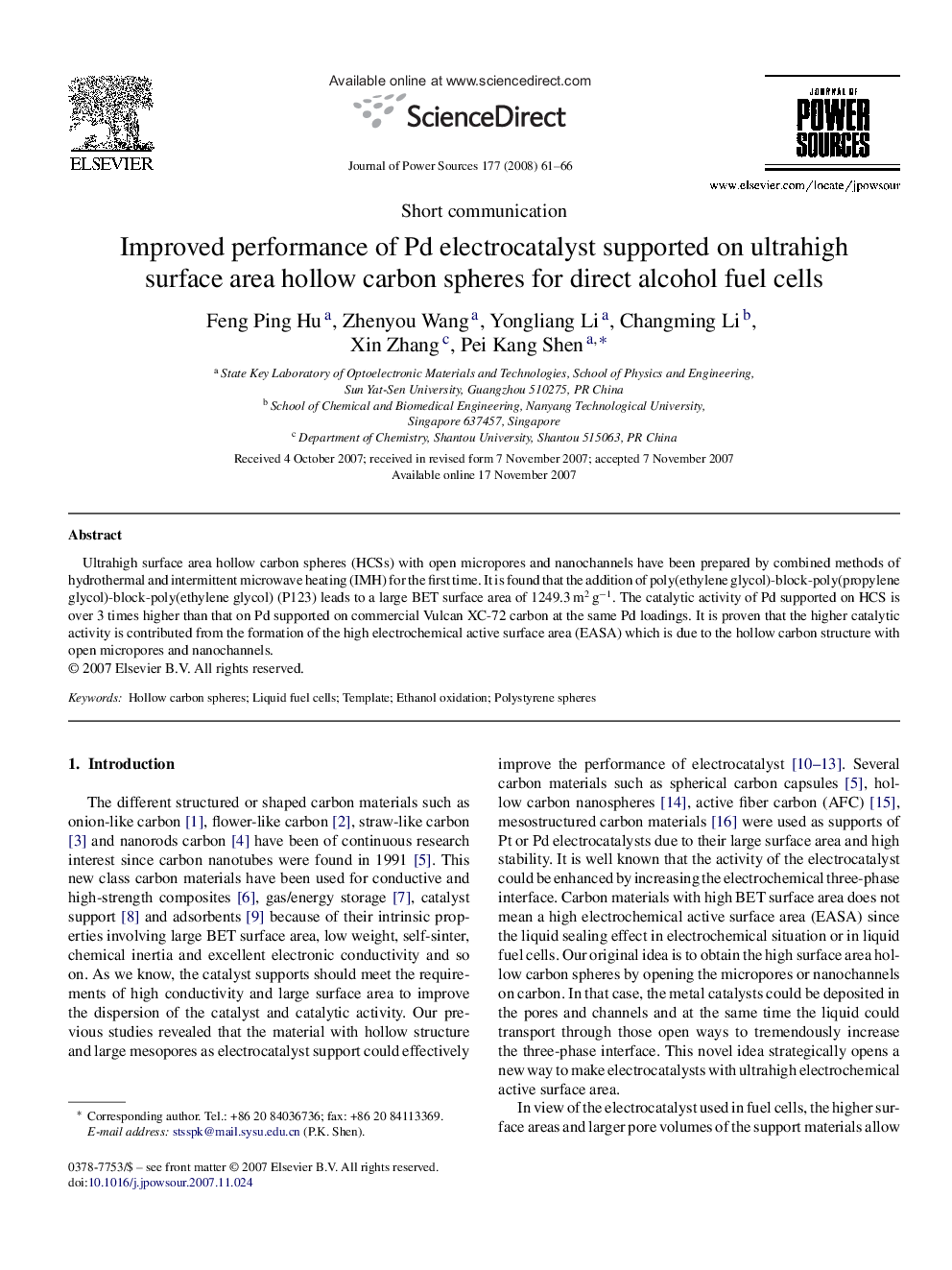| Article ID | Journal | Published Year | Pages | File Type |
|---|---|---|---|---|
| 1285686 | Journal of Power Sources | 2008 | 6 Pages |
Ultrahigh surface area hollow carbon spheres (HCSs) with open micropores and nanochannels have been prepared by combined methods of hydrothermal and intermittent microwave heating (IMH) for the first time. It is found that the addition of poly(ethylene glycol)-block-poly(propylene glycol)-block-poly(ethylene glycol) (P123) leads to a large BET surface area of 1249.3 m2 g−1. The catalytic activity of Pd supported on HCS is over 3 times higher than that on Pd supported on commercial Vulcan XC-72 carbon at the same Pd loadings. It is proven that the higher catalytic activity is contributed from the formation of the high electrochemical active surface area (EASA) which is due to the hollow carbon structure with open micropores and nanochannels.
